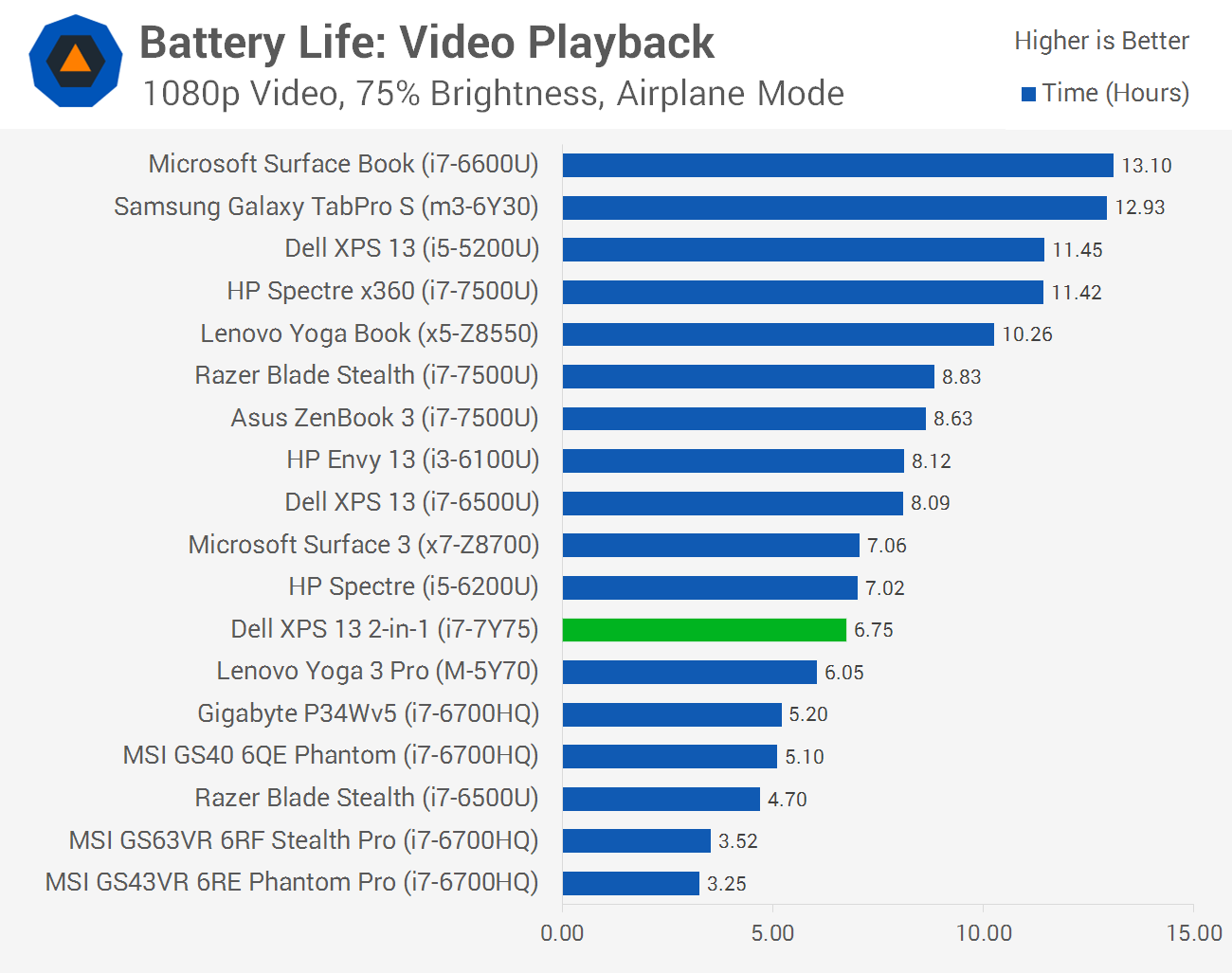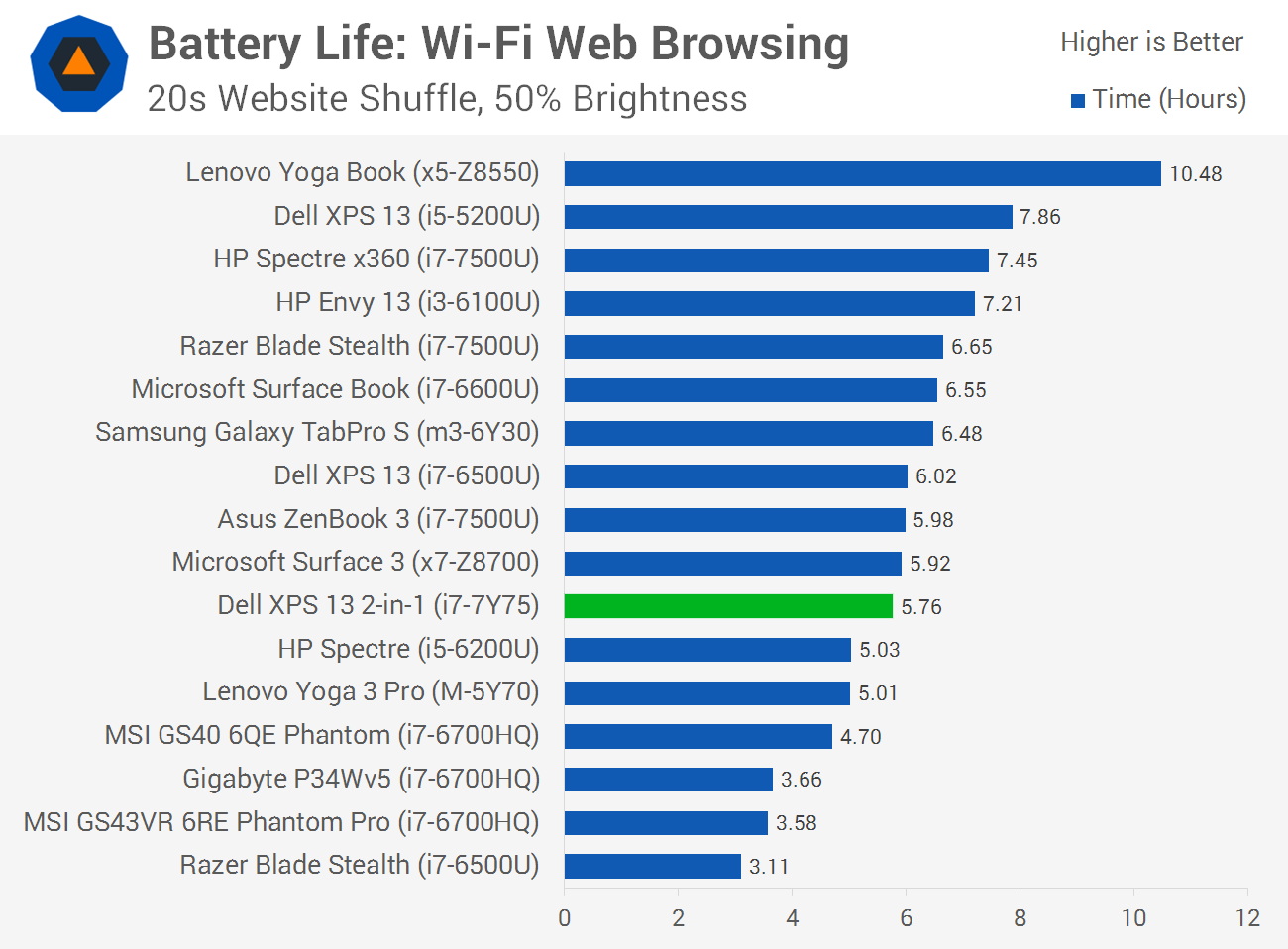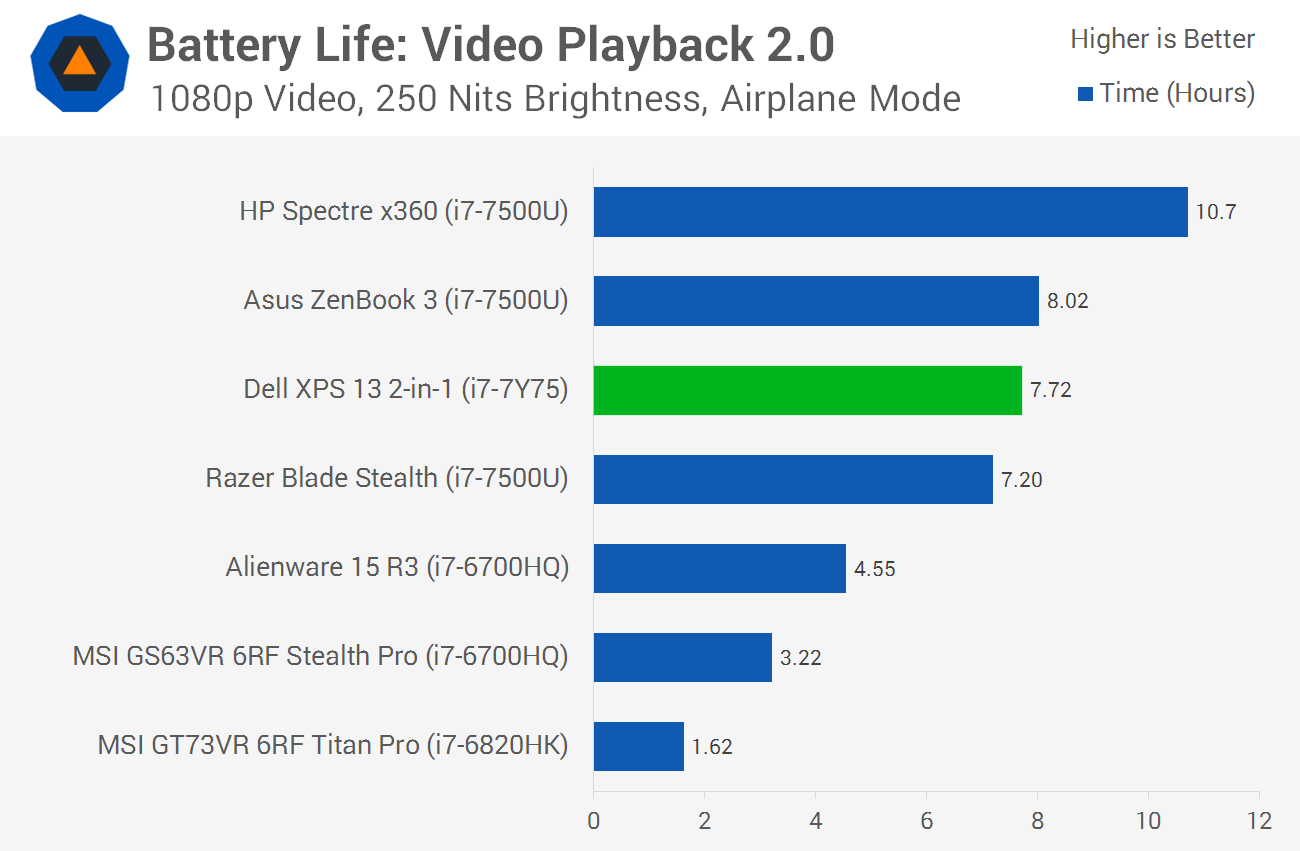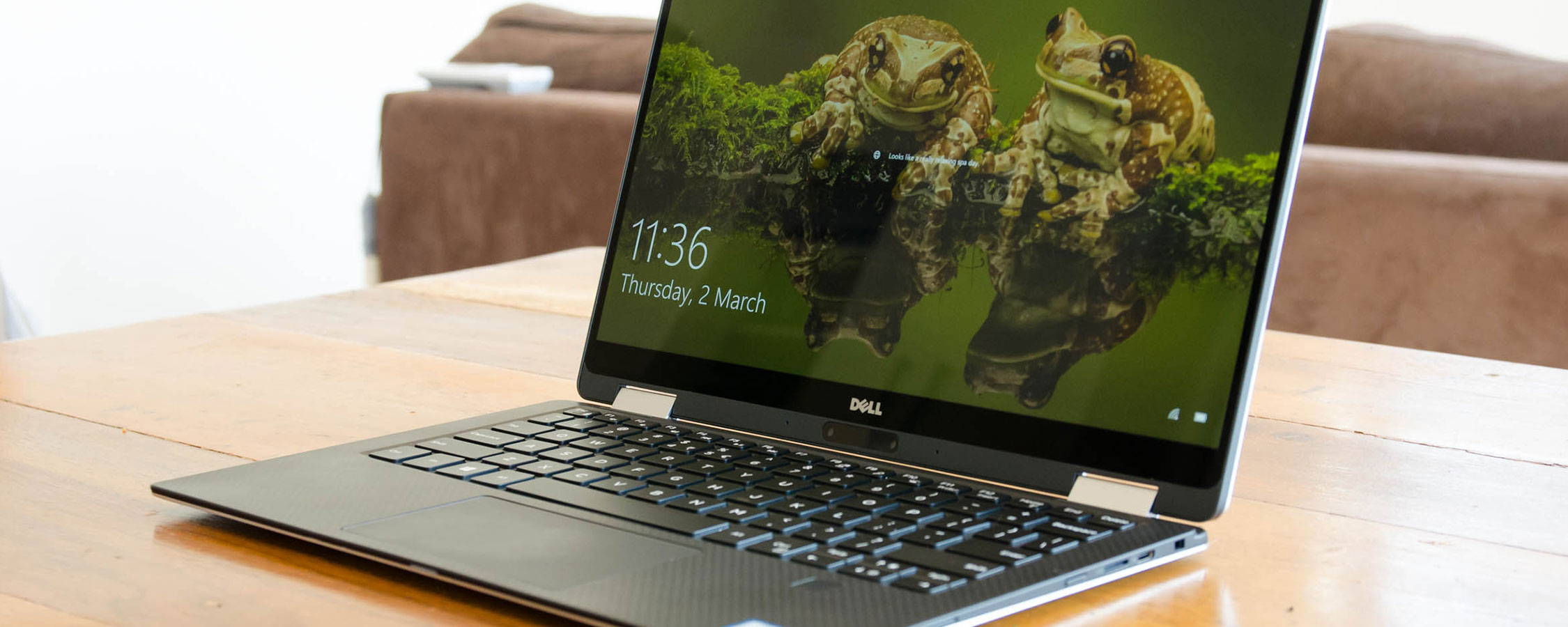Graphics, Storage Performance, Battery Life
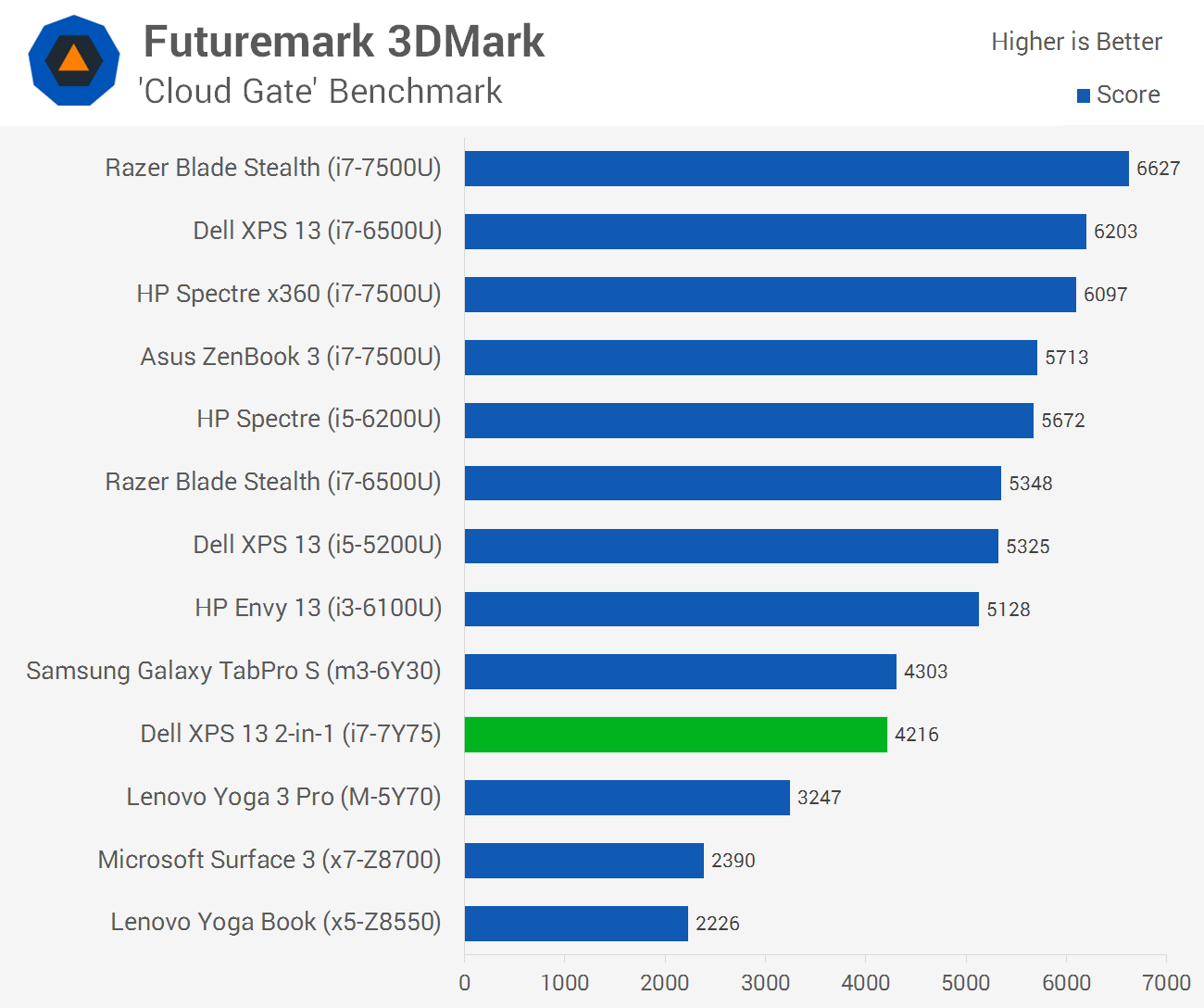
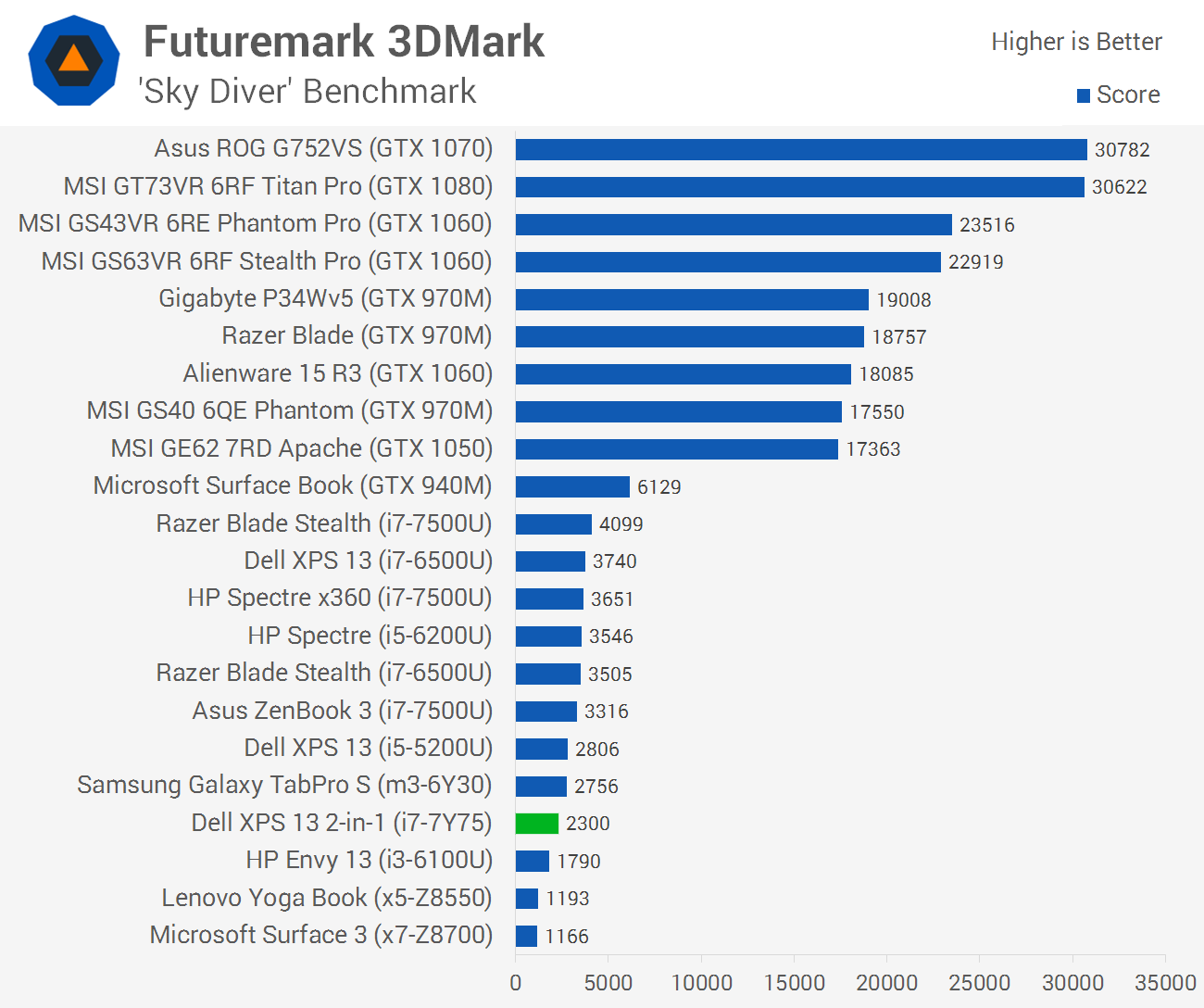
Graphics has never been a strong point of Intel's Y-series processors, and it's really no exception here. The GPU is fast enough to render basic applications to the XPS 13 2-in-1's 3200 x 1800 display without any issue, but you won't be achieving good gaming performance at all. Civilization VI, for example, is unplayable even at the lowest quality and resolution.
The Dell XPS 13 2-in-1 also appears to suffer from some throttling issues. Not only is it 33 percent slower than the Core i7-7500U in 3DMark, but it's also 9 percent slower than the m3-6Y30. It shouldn't be slower than a Skylake Y-series part in these tests, but the results clearly show that it is. The 2-in-1's chassis also gets very hot to touch during these tests, even on the keyboard side, due to its reliance on passive cooling.
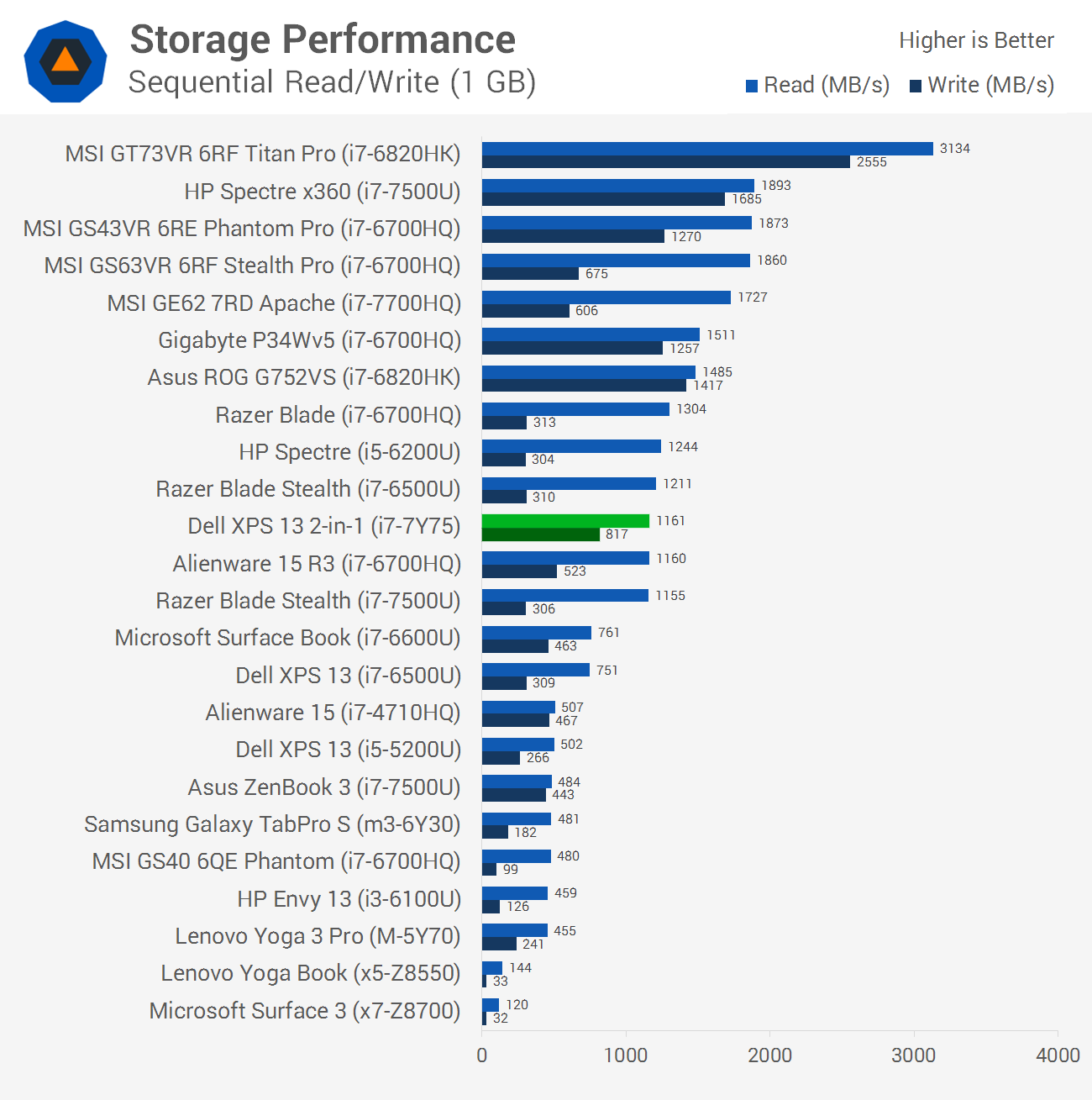
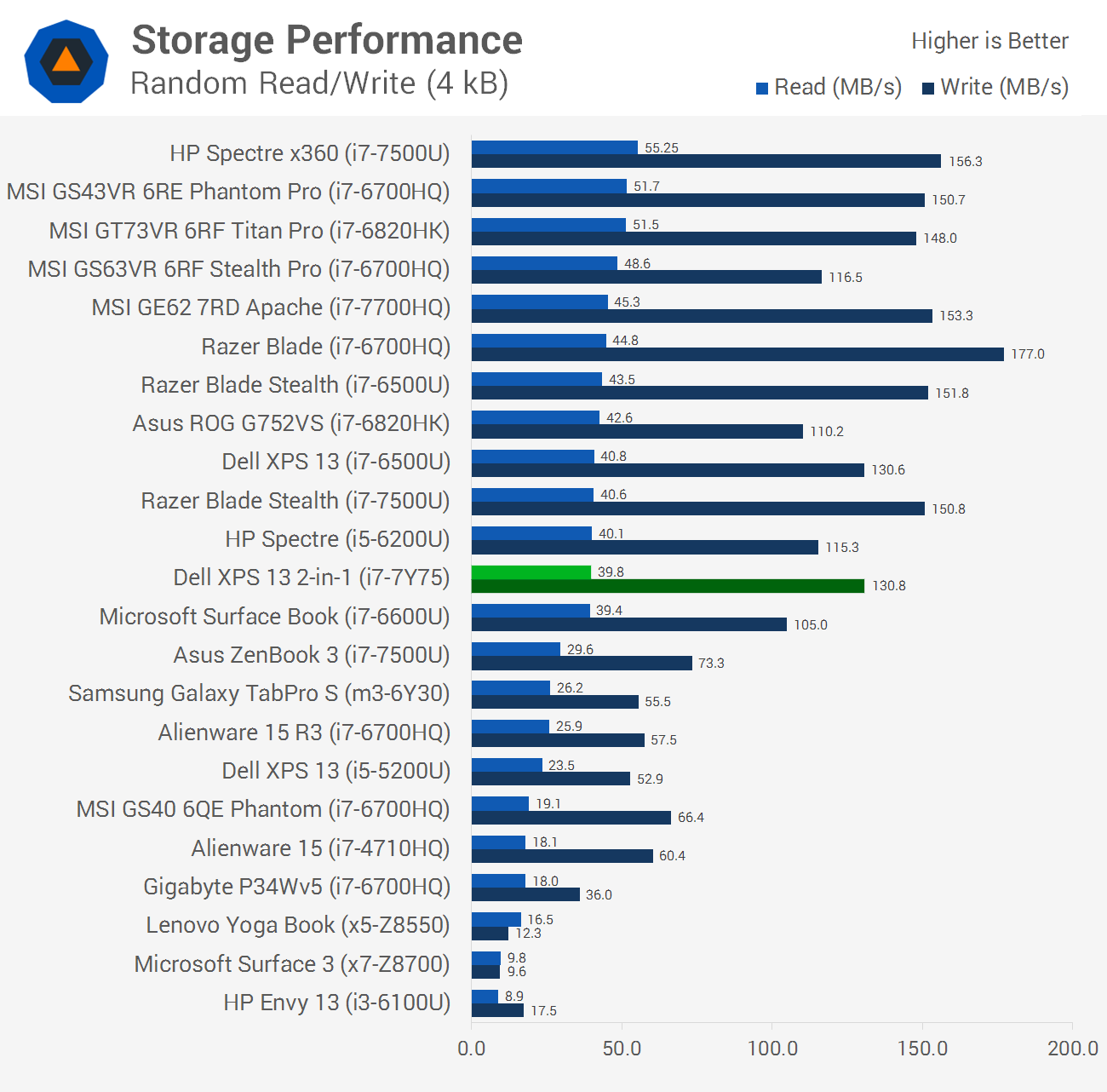
Inside my review unit was a 512GB Toshiba THNSN5512GPUK NVMe PCIe M.2 SSD. This particular SSD performs very well in sequential reads and writes, exceeding 1 GB/s reads and 800 MB/s writes. Random performance is mid-tier but still respectable for an ultraportable. In both tests, the HP Spectre x360 outperforms the Dell XPS 13 2-in-1, often by a significant margin. With that said, my Spectre x360 did pack a larger 1 TB SSD, and larger SSDs often perform better.
Battery Life
Inside the XPS 13 2-in-1 is a 46 Wh non-removable battery, which is 25% smaller than the 60 Wh battery found in the XPS 13. Dell figures that the slower 4.5W CPU will save a fair bit of battery here: Dell claims 13 hours of Netflix streaming here, which is the same figure quoted for the regular XPS 13.
